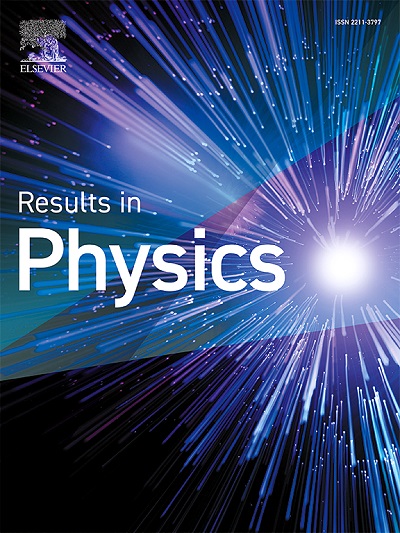Multiband adjustment engineering strategy for broadband range in photonic crystals
IF 4.4
2区 物理与天体物理
Q2 MATERIALS SCIENCE, MULTIDISCIPLINARY
引用次数: 0
Abstract
Topological edge states are crucial for optical modulation, and the overlapping Brillouin zones in nested structures can effectively control multiband edge states. A nested photonic crystal framework can enhance the rotational freedom, providing additional functionalities. In this study, a multifunctional, tunable, innovative double-rotation C4 nested photonic crystal structure was developed; it reached a higher degree of freedom via double independent rotations. These nested C4 photonic crystal structures could expand the functional range of C4 structure implementation. The multifunctional implementation of multienergy band transmissions, unidirectional transmissions, and wavelength division multiplexers containing nested C4 structures were experimentally demonstrated. The experimental results agreed well with the simulated predictions. Thus, this study offers new insights and strategies to foster the advancement of topological photonics and radar communication devices.
求助全文
约1分钟内获得全文
求助全文
来源期刊

Results in Physics
MATERIALS SCIENCE, MULTIDISCIPLINARYPHYSIC-PHYSICS, MULTIDISCIPLINARY
CiteScore
8.70
自引率
9.40%
发文量
754
审稿时长
50 days
期刊介绍:
Results in Physics is an open access journal offering authors the opportunity to publish in all fundamental and interdisciplinary areas of physics, materials science, and applied physics. Papers of a theoretical, computational, and experimental nature are all welcome. Results in Physics accepts papers that are scientifically sound, technically correct and provide valuable new knowledge to the physics community. Topics such as three-dimensional flow and magnetohydrodynamics are not within the scope of Results in Physics.
Results in Physics welcomes three types of papers:
1. Full research papers
2. Microarticles: very short papers, no longer than two pages. They may consist of a single, but well-described piece of information, such as:
- Data and/or a plot plus a description
- Description of a new method or instrumentation
- Negative results
- Concept or design study
3. Letters to the Editor: Letters discussing a recent article published in Results in Physics are welcome. These are objective, constructive, or educational critiques of papers published in Results in Physics. Accepted letters will be sent to the author of the original paper for a response. Each letter and response is published together. Letters should be received within 8 weeks of the article''s publication. They should not exceed 750 words of text and 10 references.
 求助内容:
求助内容: 应助结果提醒方式:
应助结果提醒方式:


